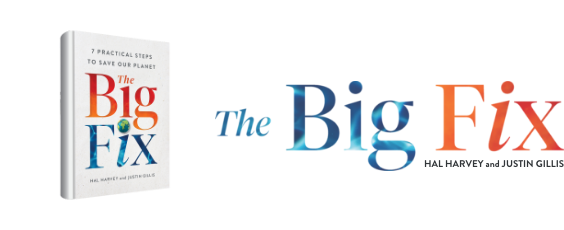
THE SEVEN STEPS
The Big Fix breaks our economy into seven realms: six economic sectors that account for most of today’s emissions, and a seventh sector on technical and financial innovations required to cut future emissions. The seven sectors are:
•Power
• Buildings
• Transportation
• Cities
• Land
• Industry
• Future Technology
Building a clean power grid is the centerpiece of any climate strategy. Electricity can displace fossil fuels across the economy, from electric vehicles to heat pumps to electrifying industrial processes — but we cannot clean up other parts of the economy without cleaning up the grid through advocacy at public utilities commissions.
POWER SECTOR
BUILDINGS SECTOR
Buildings generate a large portion of our greenhouse gas emissions because they use electricity and burn fossil fuels for space and water heating. Meeting our climate goals is impossible without cleaning up America’s buildings, and one way to do that is by improving state and local building codes.
TRANSPORTATION SECTOR
Vehicles are the largest source of U.S. emissions. We need to transition to electric cars as quickly as possible, build more charging stations, and begin electrifying large trucks and buses. In the meantime, we also need to make gas-powered cars more efficient by tightening fuel economy standards.
CITIES
America’s cities have evolved to depend on cars, which has reduced quality of life and increased air pollution. By making our cities more walkable and bikeable while improving public transportation, we can cut greenhouse gas emissions and create flourishing, equitable urban centers.
LAND
Human impacts on land—from forest management to agriculture—can worsen climate change problems or offer new solutions. Destroying habitats like rainforests and wetlands removes carbon sinks, but employing strategies like more sustainable farming practices can help pull more carbon out of the air.
INDUSTRY SECTOR
Nearly every product we buy and most material we use comes from industrial processes, which will soon be America’s largest emissions source. But industry also has the fewest climate solutions at hand. Smart policy can accelerate adoption of today’s commercially available strategies while spurring the research and development needed for tomorrow’s technologies.
FUTURE TECHNOLOGY
Tackling climate change requires cutting greenhouse gas emissions to zero and then removing them from the atmosphere. We have many tools to get started, but we need more innovation to hit zero and start drawing down emissions. Tomorrow’s technologies are being studied today, but we need policies to turbocharge them coming to market.
BUY THE BOOK:







